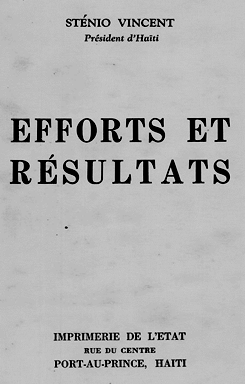"Public Works" by the Island Luminous Editorial Board
A common critique of the United States occupation is that its improvements to Haiti’s infrastructure were not permanent. Historian Hans Schmidt wrote that "public works projects, such as the construction of bridges, schools, and communications systems, have since fallen into decay." And Robert and Nancy Heinl said that "what the occupation did and tried to achieve or build… turned out to be built on sand." While we should condemn the corvée and other coercive measures taken by the United States to improve Haiti’s infrastructure, we must not overlook that Haitians did try to maintain and even expand on public works when the occupation was over.
In his initial term as Haiti’s president, Sténio Vincent ordered over 50 road construction and repair projects. The state fixed the route between Port-au-Prince and Mirebalais, which was built by the corvée when Haiti was occupied by the United States. It also repaired the roads that connected Fond Verrettes and Saltrou, and Trouin, Bainet, and Jacmel.
The state renovated and built 18 bridges. The most important one was the Pont Sténio Vincent, which crossed the Guayamouc River in Hinch and, thus, enabled easier access to the central plateau. The Pont Vincent was Haiti’s first suspension bridge. It was the pride of the new road that connected Port-au-Prince and Cap Haïtien. In 1932 heavy rain ruined several bridges. Wooden structures like the Pont Bethel on the road to Arcahaie and the bridge over the Islet River on the route that connected Port-au-Prince and Cap Haïtien were severely damaged. But they were rebuilt quickly and this time with steel. The Pont Dessalines over the Artibonite River and the Pont Pétion above the Fer-à-Cheval River were also renovated with steel.
When the United States withdrew in 1934, it handed Radio Saint-Marc-Port-au-Prince over to the Haitian government. The Vincent administrated continued to broadcast world news to Haitian listeners. Meanwhile the state opened a telephone center in Port-au-Prince.
The state also undertook irrigation and sanitation works all over the country. It built three water reservoirs. It dug new irrigation canals in Arcahaie, Léogâne, Ganthier, Croix-des-Bouquets, and the Artibonite. And drains were installed in several urban areas.

